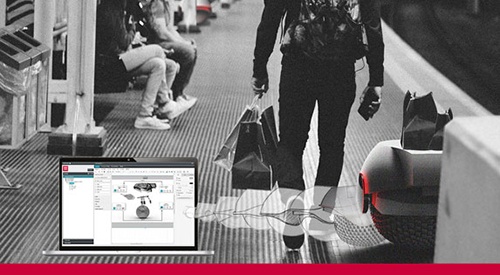
To achieve operational excellence, especially in quality risk management, organizations are expected to have three elements in perfect balance: their people, processes and technology. A focus is needed not only on the skills of those who perform FMEAs, but the processes, procedures and tools used by the team. These elements are part of a continuous process of risk identification, analysis, and mitigation aligned to their corporate objectives of improved process throughput and quality, as well as reduced product scrap and rework.
The challenge many face isn’t their people or processes, but the lack of technology for the next generation of quality engineer. This lack of technology directly impacts an organization’s ability to manage risk proactively while capturing vital knowledge from across the business. Whether that knowledge comes from the employees, managers, or supervisors, it must be captured in real time in order to achieve repeatable results and maintain operational excellence.
Recently I spoke with an automotive company about their approach to quality risk, in particular FMEA. Like many, they have well-trained and experienced quality engineers, six sigma black belts, APQP facilitators, team leads and managers. They have a clearly defined process for managing quality risk, an established corporate methodology following regulatory standards, and metrics for benchmarking. All seems well established and typical for a company their size. But the third element (technology) is where the wheels fall of the proverbial bus. They were using spreadsheets (and a lot of them). Not a big problem if you have one site, a small team and a simple production process. However, as they experienced firsthand, it becomes a nightmare when you have thirty-plus sites across the globe, some working with Excel, some using an in-house tool, some not following corporate methodology. There was no approach to capture lessons learned or promoting continuous improvement. They had an aging workforce who were leaving and their knowledge was going out the door with them. Numerous quality findings during a recent audit was only a reflection of all these underlying root causes.
We also learned that some of the group simply copy and “save as” the previous FMEA, as they saw no value in actually performing an FMEA analysis. Action items were either not defined for high RPNs. When a recommended action was specified, no one did anything about it. Ultimately, they had to manipulate the data to produce dashboards for management. These reports weren’t actually representative of what was happening within the business. Warranty issues started to climb to the tune of $5 million a year, product was being returned at an alarming rate, and the root cause analysis the engineers were doing wasn’t being escalated back to the design and manufacturing engineers for further analysis. During an emergency meeting, a team in Europe announced they had solved the quality problem three months earlier and failed to tell anyone in the company. Meanwhile, plants producing the identical product continued to struggle with the same issue. The risk of increased warranty recalls, safety issues and company liability for these breakdowns are all due to the absence of balance.

Today’s organizations are required to ensure compliance toward their certifications and the latest AIAG and ISO guidelines. They must demonstrate and continually validate their risk identification and mitigation plans through internal and external audits. However, when the new aligned AIAG-VDA guidelines are available, many organizations are going to find it challenging to manage their FMEAs with spreadsheets. The early draft of the AIAG and VDA alignment guideline stated, “When products and processes are complex, it is recommended that specialized software be used to apply the FMEA method.” The last time I checked Microsoft Excel wasn’t classed as specialized software.
To achieve the balance that will be required for people and processes to meet the acceleration of new vehicle technology and increased product introductions, they must provide their skilled teams with the technology tools to succeed and achieve the appropriate balance of risk management.
Author:
Mark Chambers
Director, Canada
PLATO North America Inc.
E: mark.chambers@plato-inc.com
W: www.plato-inc.com

Mark Chambers is the Director for Software at PLATO North America Inc.. Mr. Chambers brings over twenty-five years of software sales and consulting experience in the areas of risk management. He has supported some of the largest manufacturing, automotive, aerospace and medical device companies in the world.
During his tenure he has consulted, advised and mentored clients on a broad range of risk management methodologies both at the operations level, manufacturing and engineering level on such topics as; Organizational and Operational Risk Management, APQP, Management of Change (MOC), Failure Modes Effects Analysis & Criticality Analysis (FMEA/FMECA), Fault Tree Analysis (FTA), Process Safety Management (PSM) and Root Cause Analysis (RCA).


